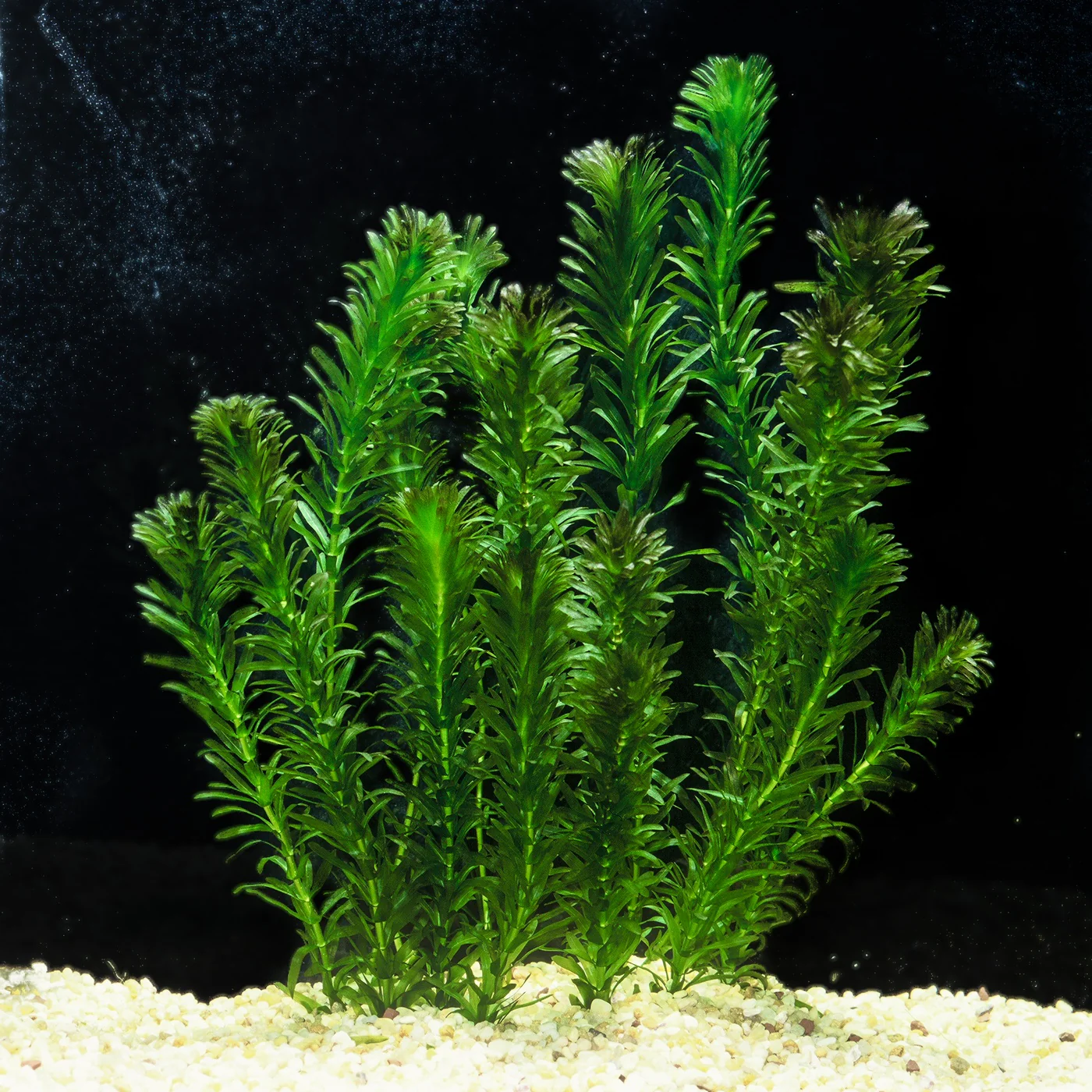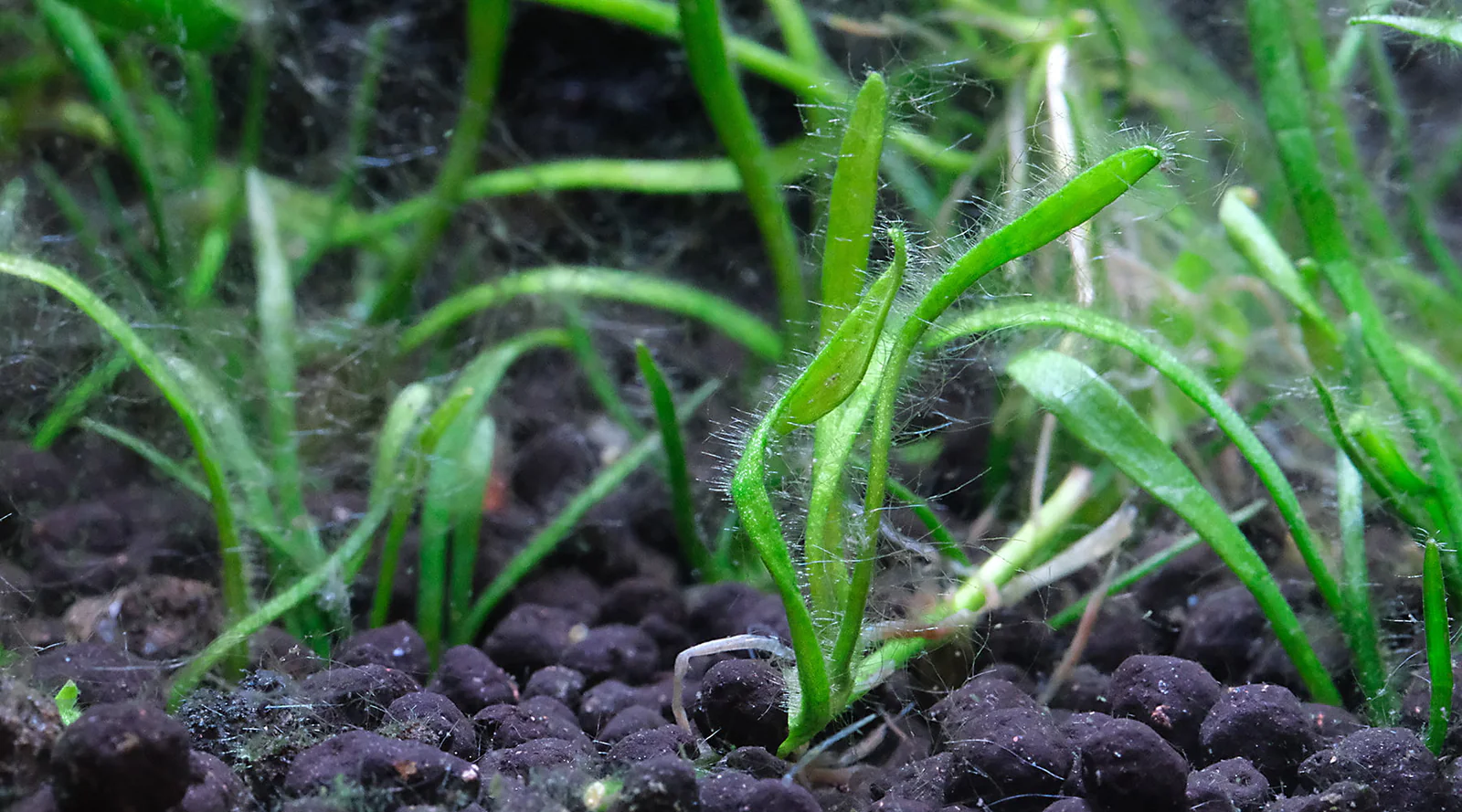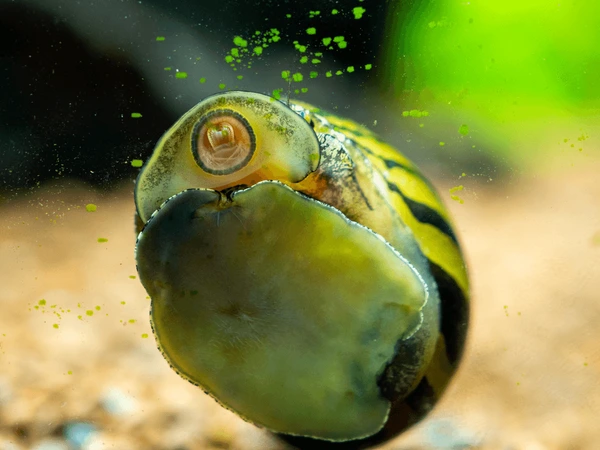Freshwater Algae Control The Definitive Guide
- Yago Alonso Gimenez
- Aug 28
- 5 min read
The best way to control algae in freshwater aquariums
Freshwater Algae Control The Definitive Guide, planting heavily with fast-growing aquatic plants (like Egeria densa and Hygrophila difformis), using floating plants (like Limnobium laevigatum), adding terrestrial bare-root plants like pothos (Epipremnum aureum), and introducing natural algae eaters such as Amano Shrimp (Caridina multidentata).
At WIO (www.wio.eco) we recommend prevention through balance: healthy plants outcompete algae naturally, keeping your aquarium crystal clear.
What Is Aquarium Algae?
Algae are a diverse group of primarily aquatic, photosynthetic organisms that capture sunlight to produce energy, much like plants. They range from microscopic, single-celled species to giant seaweeds such as kelp. Unlike true plants, algae lack roots, stems, leaves, and flowers, and they are spread across several biological kingdoms. While most algae are harmless and vital to ecosystems, some species can release toxins and trigger harmful algal blooms under favorable conditions.
Key Characteristics
Photosynthetic Energy
Algae produce their own food through photosynthesis, converting sunlight and carbon dioxide into sugars and oxygen.
Aquatic & Versatile Habitats
Most algae live in aquatic environments—freshwater, marine, or brackish—but some also thrive on damp soil, rocks, or other surfaces.
Microscopic to Massive
Their size ranges from minute single-celled organisms visible only under a microscope to large multicellular forms like kelp, which can grow to impressive lengths.
Simple Structure
Unlike higher plants, algae lack complex organs such as roots, stems, or flowers, though some have structures that resemble them.
Ecological Importance
Algae form the foundation of aquatic food webs, produce a substantial portion of Earth’s oxygen, and play a central role in global carbon cycling.Algae are simple, plant-like organisms that thrive wherever light and nutrients are abundant. In aquariums, algae appear as green fuzz, brown coatings, or slimy patches. While a little algae is normal and even beneficial, excess algae quickly destabilizes the system.
Common Types of Freshwater Algae
Green spot algae (Chlorophyta, Desmidiaceae) – Forms hard, dark green dots on glass and slow-growing plants.
Green hair algae (Cladophorales) – Creates long filaments that wrap around plants and décor.
Brown algae / diatoms (Bacillariophyta) – Appears in new aquariums as dusty brown layers.
Black beard algae (Audouinella sp.) – Grows as stubborn black tufts on wood, rocks, and filters.
Blue-green algae (Cyanobacteria, e.g., Microcystis) – Slimy mats with a foul odor; actually bacteria, not algae.
Green water (unicellular Chlorophyta) – Free-floating algae that turn water into “pea soup.”
WIO Insight: Algae is not the enemy—it’s a symptom. Excess growth signals imbalance in light, nutrients, or plant health.

Why Live Plants Are the Best Algae Control
Live plants are nature’s built-in algae management system. When plants thrive, algae decline.
Nutrient competition – Plants consume nitrates, phosphates, and ammonia before algae can.
Shade and light control – Dense planting reduces light availability for algae.
Oxygenation – Plants release oxygen, improving fish health and bacterial balance.
Stability – A well-planted aquarium avoids nutrient spikes, reducing algae outbreaks.
Best Plants for Algae Prevention
The key is to mix different types of plants—slow-growers for structure, fast-growers for nutrient absorption, floaters for shade, and even terrestrials for nitrate removal.
Low-Maintenance Plants (Beginner-Friendly)
Anubias (Anubias barteri var. nana) – Hardy, algae-resistant leaves, grows on rocks and wood.
Java Fern (Microsorum pteropus) – Easy, thrives in low light, anchors to hardscape.
Java Moss (Taxiphyllum barbieri) – Creates carpets, shelters shrimp, blocks algae surfaces.
Bucephalandra (Bucephalandra sp.) – Compact, decorative, colorful leaves.
Fast-Growing Nutrient Sponges
Egeria densa (Anacharis) – Rapidly absorbs nitrates and phosphates.
Water Wisteria (Hygrophila difformis) – Fast, feathery, excellent nutrient consumer.
Water Sprite (Ceratopteris thalictroides) – Fern-like, fast spreader, oxygenator.
Hornwort (Ceratophyllum demersum) – Allelopathic (releases natural anti-algae compounds).
Floating Plants (Surface Shaders)
Amazon Frogbit (Limnobium laevigatum) – Large roots absorb nutrients, shades tank.
Salvinia (Salvinia natans) – Reduces excess light, prevents algae bloom.
Red Root Floater (Phyllanthus fluitans) – Adds beauty, shades water, nutrient sponge.
Terrestrial Bare-Root Plants (The Secret Weapon!)
Pothos (Epipremnum aureum) – Extremely effective nitrate remover.
Peace Lily (Spathiphyllum wallisii) – Cleans water while leaves remain above surface.
Spider Plant (Chlorophytum comosum) – Strong root system removes nitrates.
WIO Tip: Adding pothos-as an emerse plant with the clean roots in water- to a new tank absorbs excess nutrients before algae can take over.
Natural Algae-Eating Helpers
Plants are the first line of defense, but algae eaters add extra support.
Amano Shrimp (Caridina multidentata) – Excellent at cleaning soft algae and biofilm.
Otocinclus Catfish (Otocinclus affinis and spp.) – Gentle grazers of soft algae.
Nerite Snails (Neritina natalensis, Clithon spp.) – Scrape stubborn algae from glass and rocks.
Siamese Algae Eater (Crossocheilus oblongus) – Specialist for black beard algae.
Plecos (Ancistrus spp., smaller species) – Effective algae eaters in larger tanks.
Practical Tips for Preventing Algae
Plant heavily from the start – Aim for 80/100% substrate coverage.
Limit lighting – 6/8 hours per day is enough for most setups.
Balance nutrients – Stable fertilization prevents plant weakness.
Add CO₂ – Boosts plant health in high-tech tanks.
Weekly water changes – 20/30% keeps nutrients in check.
Trim old leaves – Remove algae-prone tissues.
Avoid overfeeding – Excess food = algae fuel.
Maintain flow – Prevent stagnant dead zones.
Stabilize new tanks – Use seeded media or terrestrial roots like pothos.
Use blackout if needed – 3/5 days for green water or cyanobacteria.
Did You Know?
Hornwort releases natural allelopathic compounds that slow algae.
Pothos can absorb more nitrates than many aquatic plants.
Takashi Amano popularized Amano Shrimp for algae control.
Blue-green algae is cyanobacteria, not true algae, and may release toxins.
Green water algae is harvested in aquaculture as fish food.
Floating plants calm shy fish while suppressing algae.
Old leaves attract algae—always trim them.

Quick-Reference Table: Algae-Fighting Allies
Common Name | Scientific Name | Role Against Algae |
|---|---|---|
Anubias | Anubias barteri var. nana | Hardy, shades surfaces, algae resistant |
Java Fern | Microsorum pteropus | Low light, algae competitor |
Java Moss | Taxiphyllum barbieri | Creates carpets, blocks algae |
Bucephalandra | Bucephalandra sp. | Decorative, shades wood/rocks |
Egeria densa (Anacharis) | Egeria densa | Fast nutrient absorber |
Water Wisteria | Hygrophila difformis | Rapid growth, prevents hair algae |
Water Sprite | Ceratopteris thalictroides | Fast spreader, absorbs nutrients |
Hornwort | Ceratophyllum demersum | Allelopathic, nutrient sponge |
Amazon Frogbit | Limnobium laevigatum | Floating, shades water |
Salvinia | Salvinia natans | Floating, reduces light |
Red Root Floater | Phyllanthus fluitans | Floating, nutrient uptake |
Pothos | Epipremnum aureum | Terrestrial, nitrate remover |
Peace Lily | Spathiphyllum wallisii | Terrestrial, nutrient absorber |
Spider Plant | Chlorophytum comosum | Terrestrial, nitrate control |
Amano Shrimp | Caridina multidentata | Soft algae eater |
Otocinclus Catfish | Otocinclus affinis | Gentle grazer |
Nerite Snail | Neritina natalensis | Scrapes stubborn algae |
Siamese Algae Eater | Crossocheilus oblongus | Eats black beard algae |
Plecos | Ancistrus spp. | Algae eater for larger tanks |
Final Thoughts: Balance, Not Battles
Freshwater Algae Control The Definitive Guide, At WIO, we believe algae control should be natural, sustainable, and plant-powered. Focus on growing healthy plants, balancing nutrients, and building a stable ecosystem.
By combining fast-growing aquatic plants, floating plants, bare-root terrestrials like pothos, and natural algae eaters, you can create a thriving freshwater aquarium where algae is no longer a problem—just a small, natural part of the ecosystem.
WIO Tip: Prevention is easier than cure. Plant heavily, balance your system, and let nature do the work.


























Comments